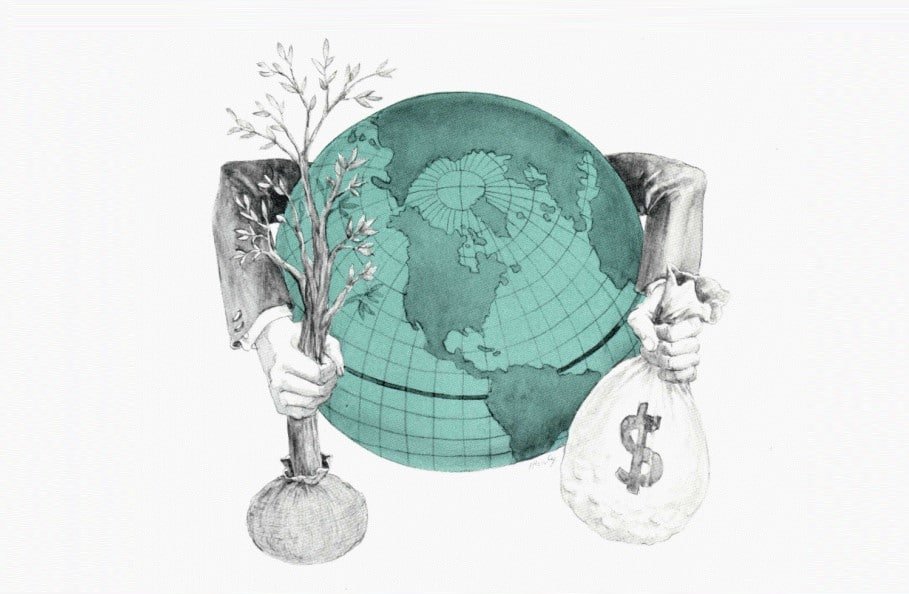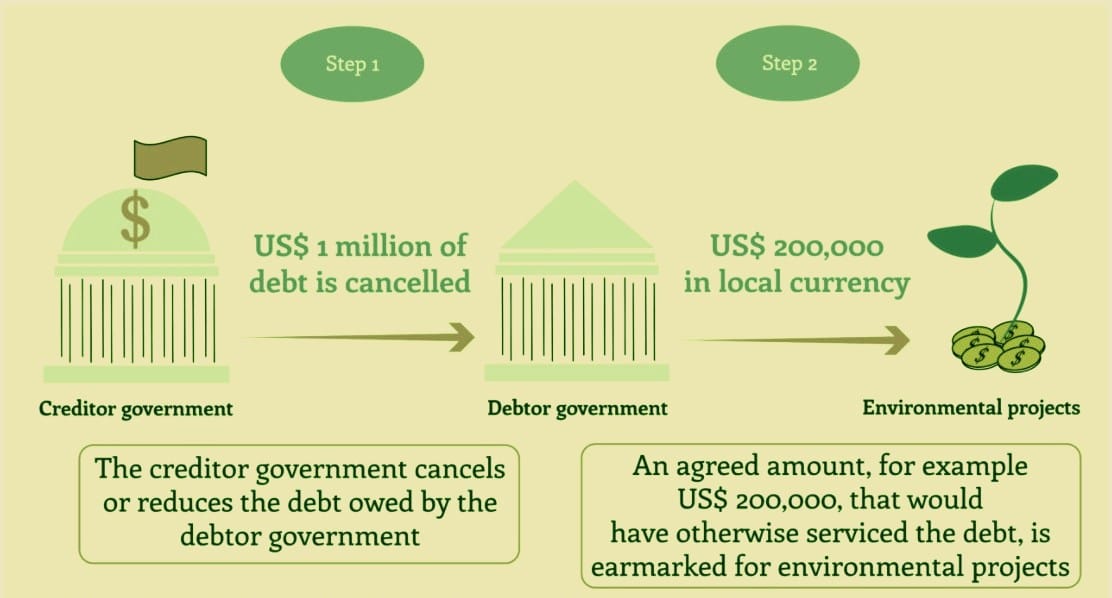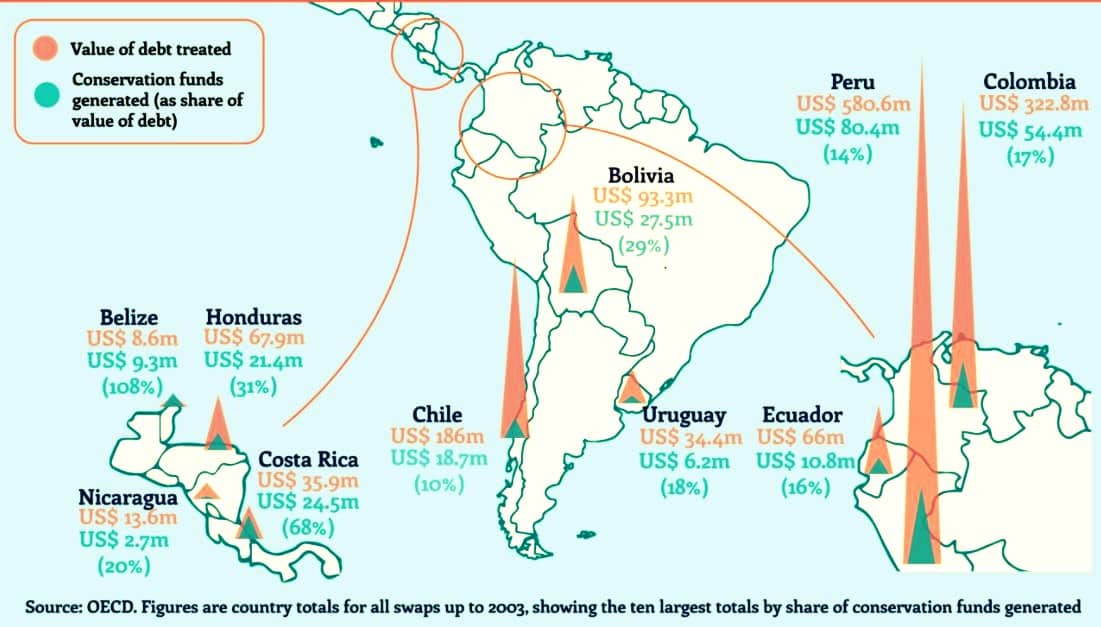Debt-for-nature swaps or debt-for-climate swaps are now getting more attention from the world’s developing countries who have around $500 billion of debt servicing payments.
According to the Nature Conservancy, debt restructurings tied to nature or climate-friendly outcomes present a multi-billion-dollar possibility.
While the instruments have been around since the 1980s, they start to gain more traction once again following the deals made by the Nature Conservancy.
The recent debt crises for developing nations due to COVID-19 pandemic, Russia’s invasion of Ukraine, and rising interest rates also prompted climate swaps to resurface.
What are Debt-for-Nature or Climate Swaps?
The vital role of forests in capturing and storing carbon dioxide has attracted renewed interest in debt-for-nature swaps.
- They are deals that allow a country to restructure its debt at a lower interest rate or for longer repayment periods. And that’s in exchange for the debtor’s commitment to fund conservation or climate-related projects.
Debt-for-climate swaps usually involve countries that are financially distressed or have difficulties in repaying their foreign debts. The proceeds through the swaps go to conservation or green projects managed by local environmental trust funds.
The lenders can be developed country governments, commercial banks, or even private companies. Commercial climate swaps involve selling a commercial bank’s debt on secondary markets at discounted rates.
Bilateral debt swaps involve government debt, known as sovereign debt, and typically need a restructuring plan for the debtor. Here’s how bilateral debt-for-nature swaps work.
A portion of the capital that would have otherwise gone to paying off the original debt is channeled towards pre-agreed investments in conservation projects or implementation of environmental policies.
Debtors benefit by reducing their debt burden and opening fiscal space for dedicated investments in climate projects. They also benefit by decreasing pressures on the exchange rate as their new obligations are in domestic currency.
As for creditors, the lending developed countries that are parties to the United Nations Framework Convention on Climate Change (UNFCCC) benefit by accounting the climate swaps toward their commitment to provide $100 billion per year in climate finance to developing countries.
The Market for Debt-for-Climate Swaps
58 of the world’s developing countries most vulnerable to climate change collectively have around half a trillion of debt servicing payments due in the next 4 years. An adviser from a coalition representing those nations said in an interview that:
“This huge debt service payment could obstruct opportunities to invest in adaptation or the low-carbon transition… Debt swaps must scale. We’re just not in a situation where we can have austerity because we need to invest out of the pandemic and invest out of climate impacts.”
Since 2016, the Nature Conservancy has organized 3 debt-for-nature swaps involving the Seychelles, Belize and Barbados. For these deals, the organization was able to convert over $500 million of debt into $230 million of money for conservation.
Previous examples of bilateral debt-for-nature swaps from Latin America are as follows:
During a panel discussion at the COP27 climate summit, Jennifer Morris, CEO of Nature Conservancy, said that:
“The opportunity for conservation here is huge… We see $10 billion right now of opportunity that can turn $2 billion into conservation, with not one penny of new philanthropy coming from the private sector.”
But the market for climate swaps is a niche due to its high transaction costs. Plus, there’s a need to monitor climate projects as well as the need for the debtor to make a long-term commitment to the scheme.
What’s even more remarkable is that the world’s biggest bilateral creditor, China, hasn’t been a part of these swaps substantially. Still, there’s growing interest from the developing nations recently.
For instance, Gabon revealed plans last month for a $700 million debt swap to fund marine conservation. This could be the largest transaction to date.
The island nation of Cabo Verde also plans to do a debt-for-climate swap.
Last year, Argentina committed to linking a portion of its foreign debt to investments in green infrastructure. This year, the president of Colombia suggested a debt-for-nature swap to protect its Amazon rainforest.
And most recently at the COP27 summit, several developing countries also expressed interest in supporting this kind of climate financing. These include statements from Gambia, Sri Lanka, Pakistan, and Kenya.
The Role of Carbon Credits in Climate Swaps
Countries most vulnerable to climate change face many problems as they need to spend more to improve resilience and reconstruction and also have a higher cost of capital.
This is where climate swaps become crucial by offering those countries the chance to still make necessary climate investments. And carbon credits can be part of the swaps, according to the director, wherein investment from the private sector is the key to debt restructuring.
But this can be challenging because the private sector can’t relabel the debt as development assistance. The use of carbon credits addresses this by providing incentives for private stakeholders.
And with the surge of corporate net zero pledges, the use of carbon offset credits is also growing. They can make use of the swaps and link them to their ESG and sustainable financing schemes.
Private holders of sovereign bonds can get the offset credits in exchange for a debt-for-nature swap or restructuring. These credits are from nature-based and other emissions reduction projects.
International climate bodies are currently investigating climate swaps in the context of programs to support a greener and sustainable economy.



